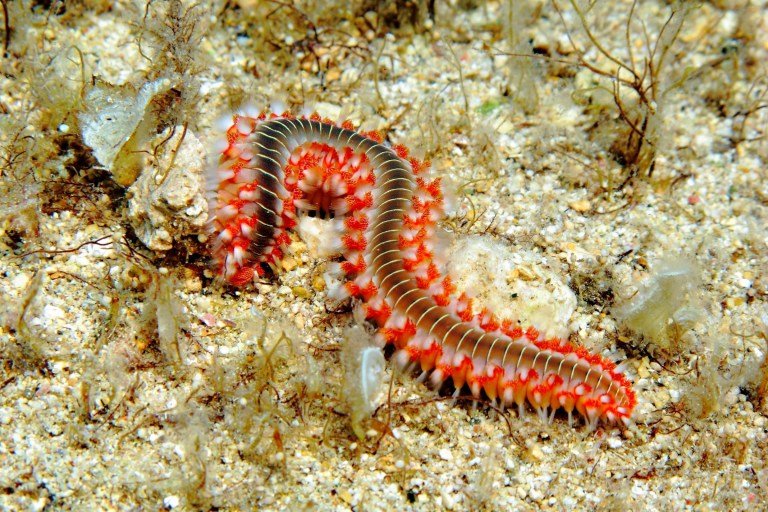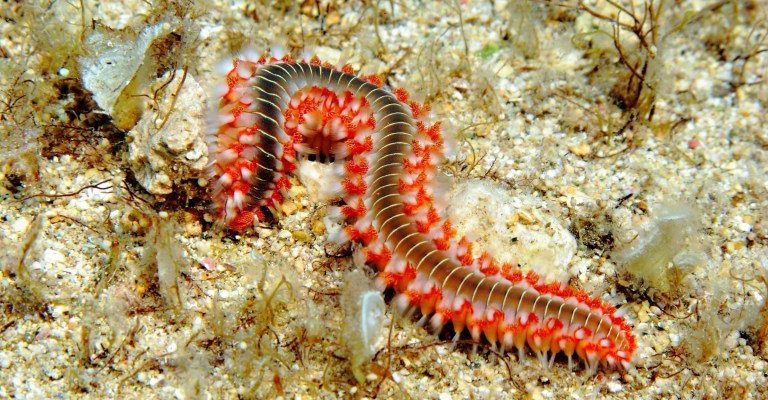
Using the right equipment not only keeps you safe but also makes the process of handling these creatures smoother and more efficient. Brands like Tidepool and Aquatic Life have some great options when it comes to gloves that provide both protection and dexterity. You might be wondering, “What should I look for in gloves and gear?” Let’s dive in and explore the best gloves and gear for handling bristle worms.
Understanding Bristle Worms
Before we get into the gear, it’s helpful to understand what bristle worms are and why you might need to handle them. Bristle worms are segmented worms that play a crucial role in the marine ecosystem. They help decompose organic materials, making them vital for a healthy aquarium or natural habitat. However, their bristles can easily irritate human skin, causing rashes or stings, which is why proper protection is essential.
Picture a garden: bristle worms are like hardworking little gardeners helping to break down waste. But just like you wouldn’t want to stick your hands in thorny bushes without gloves, you don’t want to handle these worms unprotected. Understanding their behavior can also help you know when to handle them and when to leave them be. Often, it’s best to scoop them up gently, using tools along with your gloves to minimize direct contact.
Choosing the Right Gloves
When it comes to handling bristle worms, **glove selection** is key. Look for gloves that are both durable and provide good dexterity. Here are a few types to consider:
- Nitrile Gloves: These are a fantastic choice. They offer good chemical resistance and keep your hands protected against the bristles. Plus, they fit snugly, allowing for precise movements.
- Latex Gloves: If you’re not allergic, latex gloves can provide a good grip. They’re stretchy and comfortable, but be cautious as they can tear more easily than other options.
- Heavy-Duty Work Gloves: For those who want extra protection, especially in larger aquariums, heavy-duty gloves can offer both safety and durability.
You might be wondering about the thickness of the gloves. Thicker gloves can sometimes sacrifice dexterity for protection. So, try to find a balance that protects your skin while still letting you feel what you’re doing.
Other Essential Gear
Alongside gloves, a few other tools can enhance your bristle worm handling experience. Here are some essentials:
- Long-Handled Tweezers: These are perfect for gently picking up bristle worms without getting too close. They help you maintain distance and are excellent for careful placements.
- Netting: A fine mesh net can be useful for catching bristle worms without direct contact. Just be sure the mesh is fine enough to prevent them from slipping through.
- Bucket or Container: If you need to transfer the worms, a container or bucket filled with water allows for safe transport. Make sure it’s large enough to keep them comfortable.
Using these tools together with your gloves creates a safer and more efficient way to handle bristle worms. It’s like having the right kitchen tools when cooking; they make everything easier and more enjoyable!
Safety First: Preventing Stings
You might think, “Are bristle worms really that bad?” Honestly, while they aren’t deadly, the irritation from their bristles can be quite uncomfortable. Here are some tips for staying safe:
– **Wear Gloves**: Always start with a good pair of gloves. Even if you’re just observing, it’s better to be safe than sorry.
– **Take Your Time**: Rushing can lead to mistakes. Move slowly and deliberately when handling them.
– **Know What to Avoid**: If a bristle worm is agitated or feels threatened, it may be more likely to defend itself. Learn their body language to know when to step back.
By using proper safety steps, you’ll minimize the risk of irritation. Remember, while these worms are fascinating to observe and handle, they can also be a bit prickly—literally!
How to Handle Bristle Worms Effectively
Now that you have your gloves and gear, how do you actually handle bristle worms? Let’s break it down:
1. **Preparation**: Before you start, ensure you have everything ready. Grab your gloves, tweezers, and a container. Having your gear on hand helps avoid unnecessary contact.
2. **Gentle Approach**: Use your tweezers or net to gently lift the worm. Don’t squeeze too hard; a light touch is enough. It’s almost like cradling a delicate flower.
3. **Transfer Carefully**: Once you’ve got the worm, move it to your container filled with water. Make sure it’s a smooth transfer to keep it healthy.
4. **Release Thoughtfully**: If you’re moving the worm to a new habitat, be sure it’s a suitable environment. Research the best conditions for bristle worms to thrive.
Handling bristle worms can be a rewarding experience. As long as you take the necessary precautions, you’ll be able to appreciate these tiny creatures without any hassle.
Why Gear Quality Matters
You might be thinking, “Can’t I just grab any old gloves?” Here’s the thing: quality gear can make all the difference. Cheaper gloves might tear easily, leaving your hands exposed.
Investing in quality gloves and tools not only protects you but can also enhance your overall experience. For instance, a good pair of nitrile gloves can withstand water and won’t rip like flimsy versions, giving you the confidence to handle bristle worms effectively.
Plus, brands like Tidepool and Aquatic Life prioritize safety and comfort, so you can trust their products. Quality gear means fewer worries, allowing you to focus on what really matters—connecting with the incredible marine life around you.
Final Thoughts
Handling bristle worms might seem a bit daunting at first, but with the right **gloves and gear**, it can be a straightforward task. Remember, choosing protective gloves, having the right tools on hand, and following safety precautions are all part of the experience.
Just like in any other hobby, preparation is key. By understanding what you need and how to use it, you’ll build confidence in handling these fascinating creatures. So gear up, stay safe, and enjoy your exploration of the underwater world!

